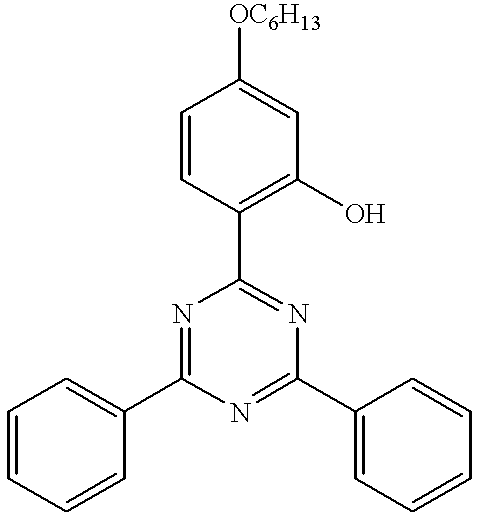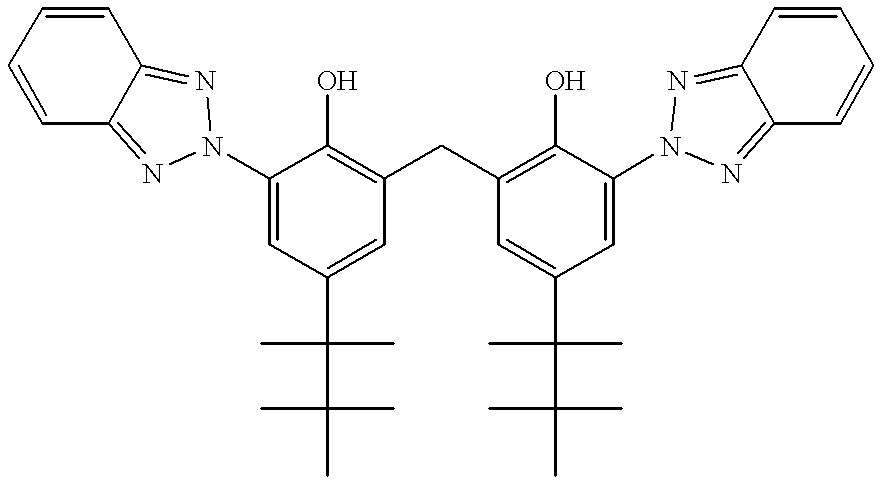Hydrolysis-resistant, transparent, biaxially oriented film made from a crystallizable thermoplastic, and process for its production
a thermoplastic and crystallization technology, applied in the direction of plastic/resin/waxes insulators, organic insulators, electrical appliances, etc., can solve the problems of affecting the sealing performance of the film, the side no longer has the sealability of the sealable outer layer, and the use of the film is very restricted
- Summary
- Abstract
- Description
- Claims
- Application Information
AI Technical Summary
Benefits of technology
Problems solved by technology
Method used
Image
Examples
example 1
The monofilm produced comprised PET as main constituent, 0.2% by weight of silicon dioxide (Sylobloc®, Grace, Worms, Germany) as antiblocking agent, and 10% by weight of MB2.
To obtain uniform distribution, the silicon dioxide, which is insoluble in the PET, was incorporated into the PET by the raw material producer.
The PET had standard viscosity SV (DCA) of 810, corresponding to intrinsic viscosity IV (DCA) of 0.658 dl / g.
60% by weight of PET, 30% by weight of PET regrind, and 10% by weight of the masterbatch MB2 were charged at room temperature from separate feed vessels into a vacuum dryer, which traversed a temperature profile of from 25 to 130° C. from the time of charging to the end of the residence time. During the residence time of about 4 hours, the mixture of raw materials was agitated at 61 rpm.
The precrystallized or, respectively, predried mixture of raw materials was post-dried in the downstream hopper, likewise in vacuo, for 4 hours at 140° C. The film was then produced ...
example 2
A monofilm was produced as in Example 1 from 51% by weight of PET (RT49), 10% by weight of MB2, 4% by weight of MB4, and also 35% by weight of regrind directly associated with the process.
example 3
The film from Example 2 was post-treated under almost zero tension in a heating oven at a temperature of 200° C. with a residence time of 60 seconds.
PUM
| Property | Measurement | Unit |
|---|---|---|
| Yellowness Index | aaaaa | aaaaa |
| diameters | aaaaa | aaaaa |
| thickness | aaaaa | aaaaa |
Abstract
Description
Claims
Application Information
 Login to View More
Login to View More - R&D
- Intellectual Property
- Life Sciences
- Materials
- Tech Scout
- Unparalleled Data Quality
- Higher Quality Content
- 60% Fewer Hallucinations
Browse by: Latest US Patents, China's latest patents, Technical Efficacy Thesaurus, Application Domain, Technology Topic, Popular Technical Reports.
© 2025 PatSnap. All rights reserved.Legal|Privacy policy|Modern Slavery Act Transparency Statement|Sitemap|About US| Contact US: help@patsnap.com



